Everything Everywhere All at Once — inside the indie movie which just got 11 Oscar nominations
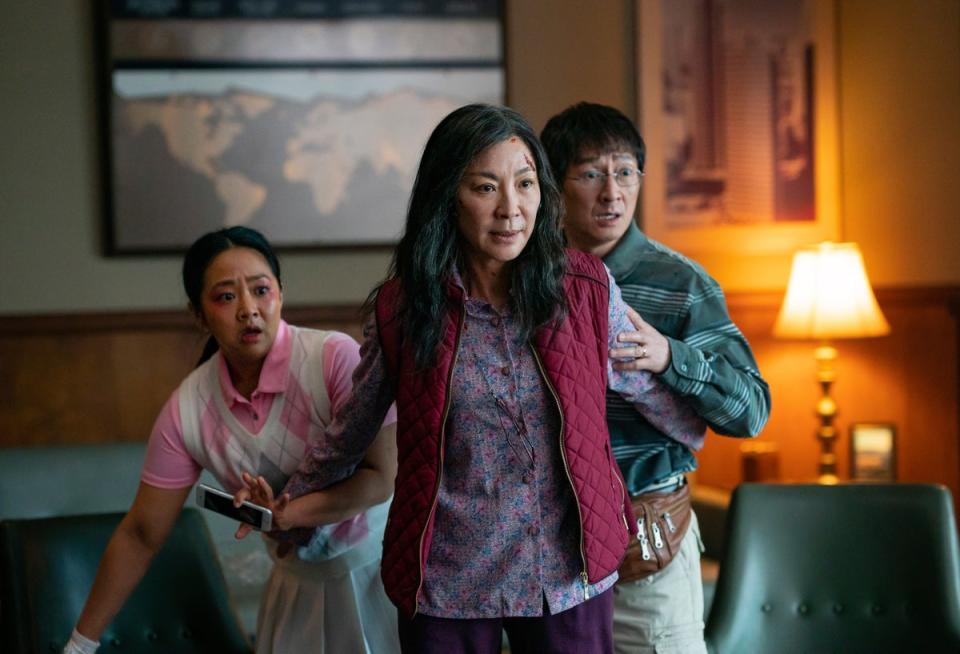
There was a moment at Everything Everywhere All at Once’s first London screening back in May 2022 where directing duo Dan Kwan and Daniel Scheinert — who go by the moniker “Daniels” — seemed almost annoyed.
Speaking to a packed-out Ham Yard Theatre (Cate Blanchett and Jonathan Ross were both in the audience — not bad for a mid-week screening of a small budget indie film), they couldn’t quite place why their film has become such a universally acclaimed hit. The week before it had gone to number one at the US box office after six weeks climbing the charts, and had at that point earned them $38.2 million (£31 million) against a $25 million (£20 million) budget. Critics seemed to love it, too, with Vanity Fair’s Maureen Ryan calling it the “role of a lifetime” for Michelle Yeoh who plays the lead character, while the Guardian’s Lisa Wong Macabasco described it as “the year’s wildest movie”. Yeoh plays Evelyn Wang, a Chinese immigrant who runs a laundromat which is currently being audited by the IRS. That is until she’s sucked into a multiversal battle to prevent a cataclysmic destruction threatened by an evil “everything bagel”.
Yes, it’s weird and despite that, award-winning television writer and producer Scott Reynolds called it the “culmination of cinema”. It’s a spectacularly unexpected feat for the film, which “started off as a joke about what would happen if our mums got stuck in The Matrix,” said Scheinert during a Q&A at the screening (it was hosted by Last Night in Soho director Edgar Wright). “We’ve always prided ourselves on making weird stuff that’s not for everyone,” he continued, before joking that this level of blockbuster success left the duo worried that they had sold out.
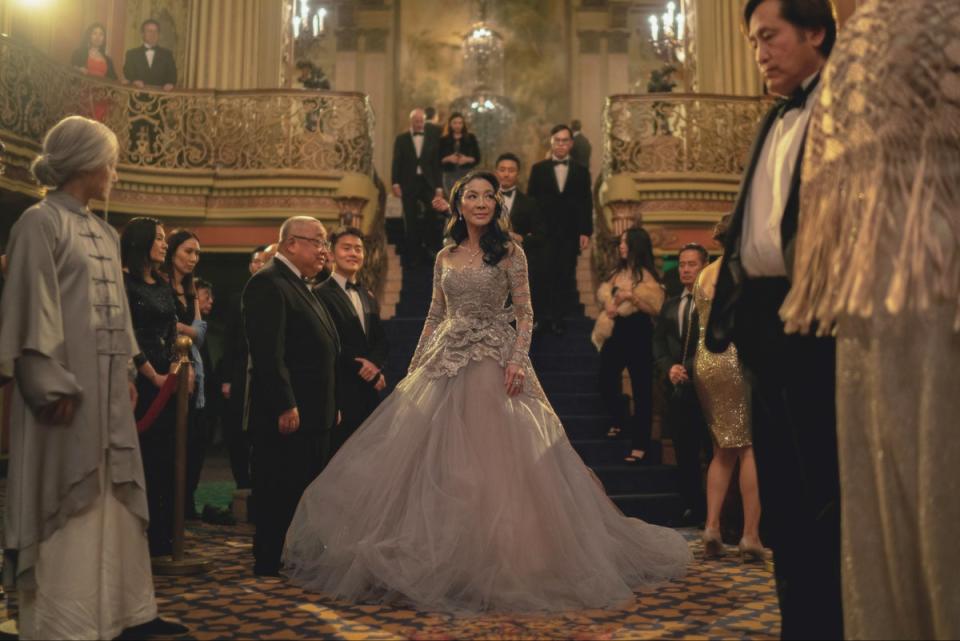
Let’s not forget that these were the masterminds behind Swiss Army Man, a movie where Daniel Radcliffe played a farting corpse. It was so absurd that some audience members walked out of the Sundance screening — which I suspect Kwan and Scheinert secretly enjoyed.
Everything Everywhere All at Once is undoubtedly a bizarre film. There’s a five-minute scene where two sentient rocks telepathically argue with one another (warning: it’ll make you cry), butt plugs are portals to parallel versions of yourself and a fanny pack-wielding kung fu fight takes place inside an IRS office. And that’s barely scratching the surface of this surreal, two-hour roller coaster into the film’s multiverse.
Time Magazine’s Stephanie Zacharek described it as being “too frenetic only for craziness’s sake”, and she’s right. At points it feels like Daniels are testing the audience to see how far they can push them. And yet, it seems that audiences are ready to be pushed. In fact, Everything Everywhere’s success largely comes down to its following on social media, where word-of-mouth recommendations have helped propel the arthouse flick to certified “sleeper hit” status. Repeated calls from fans online also contributed to it securing a theatrical release here in the UK (it’s in cinemas this week).
Like many, I first heard about it on TikTok via a girl who posted a video of herself crying after watching the film with the caption “I need to go hug my parents” [sic]. That video has since been watched seven million times. Now it’s practically a trend for teens to post videos of themselves crying after seeing Everything Everywhere. Even two Spider-Men, Andrew Garfield and Tobey Maguire, have participated — well, kind of. One user caught the two on a cinema date deeply engrossed in the film which, understandably, caused a huge hysteria when posted to TikTok.
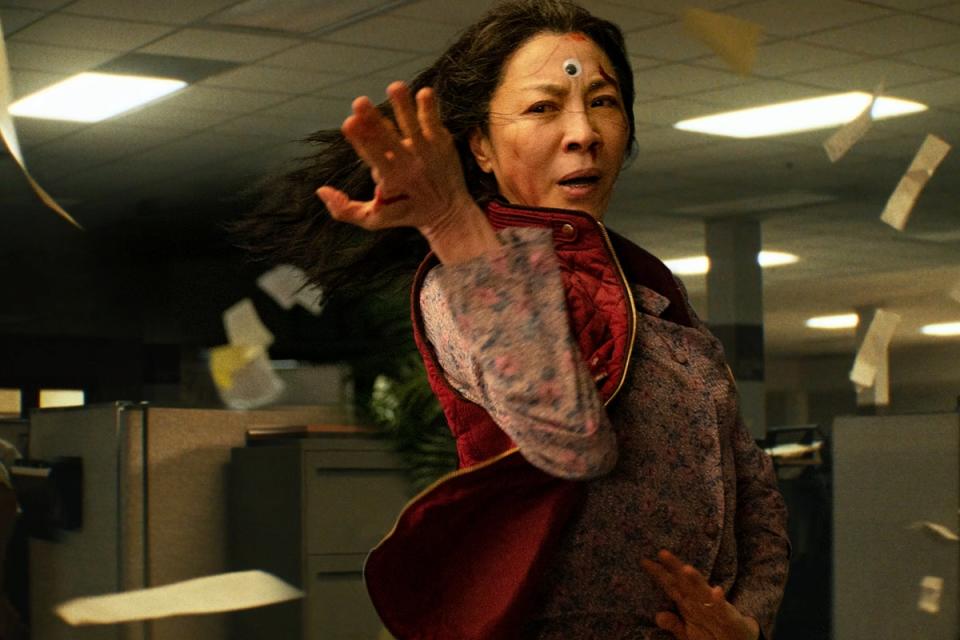
Children of immigrant parents, in particular, have found much to connect with. By accessing multiple versions of herself, Evelyn is able to explore the bond with her queer daughter Joy Wang (Stephanie Hsu) and disapproving father Gong Gon (James Hong) — making the film’s multiverse a place where families can work out their issues.
“Everything Everywhere All at Once needs a trigger warning for daughters of immigrant moms,” wrote one TikTok user, who like the many others, posted herself crying walking out of the cinema. “I’ve never actually seen a movie show the relationship I have with my mom and now I have to be in public and act like my life hasn’t been irreparably altered by that movie.”
After years of saying that mainstream cinema wasn’t interested in Asian storylines, Everything Everywhere follows in the footsteps of Crazy Rich Asians and Shang Chi as a massive one-finger-up at industry gatekeepers. Daniels’ offering, though, arguably goes one step further than the previous two.
As the cultural theorist and Princeton University professor Anne Anlin Cheng has pointed out: “Asian American concerns operate as more than an ethnic detail in Everything Everywhere; they are the engines for the wild energies in the film… The film invokes, individualises, multiplies, takes apart and then wackily reassembles enduring tropes [of the Asian American experience]...
“Instead of locking down its subjects, as stereotypes are wont to do, the film uses its multiversal divagations to imagine alternative lives and versions of them. It’s as if the wild ride is meant to shake us free from habits of thought.”
The multiverse trope also hasn’t hurt the film’s chances at success. Marvel offerings such as Spider-Man: No Way Home and Doctor Strange in the Multiverse of Madness, have primed audiences for alternate timeline plotting. But where those blockbusters use the multiverse for pure entertainment, Daniels’ take on the trope taps into a fundamental truth of the human experience. Through the multiverse, Evelyn finds all the answers to her lifelong “What if?” questions.
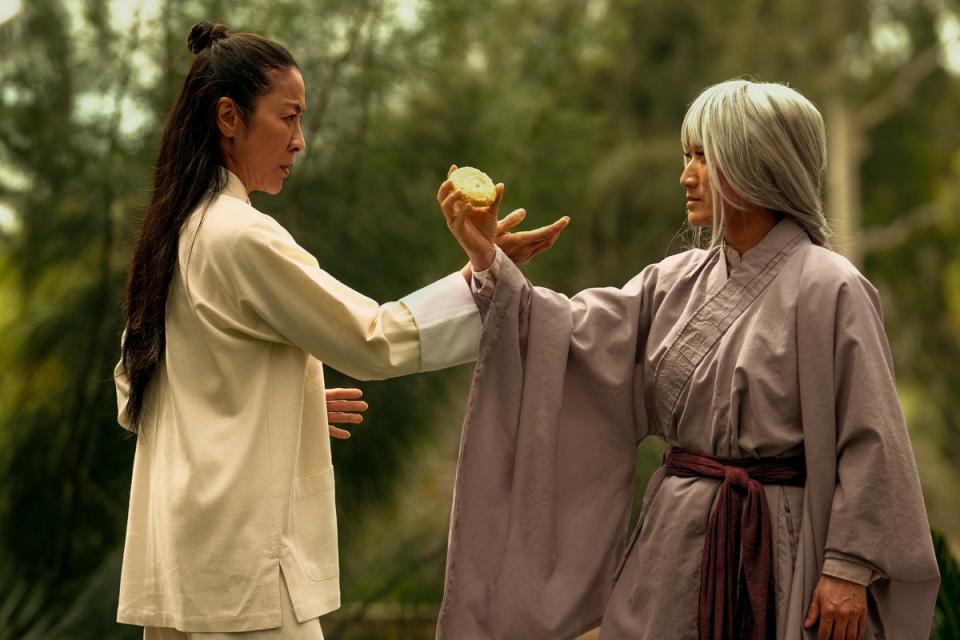
What else could she have been if she never ran off to marry a man who never earned her family’s approval, or gave up dreams for a life that currently doesn’t seem to have been worth the sacrifice? Would she have been happier? Does that — or anything — even matter?
It’s an existential question that has become part and parcel of the internet age. “Everything happens so much,” the legendary Twitter account @ horse_ebooks tweeted in 2012. Despite bordering on nonsense, the message singularly captured the feeling of exhaustion that comes with trying to keep up with the flood of input that demands our attention. It has caused many to question why we all keep battling — and plenty have arrived at nihilistic answers. That’s where Everything Everywhere steps in.
Through Evelyn’s foray into the multiverse, we see that while there is an infinite amount of pain and heartbreak, there is also an infinite amount of creativity, passion, beauty and connection. How do you make sense of all that? Ultimately, they suggest that the solution is neither reactive violence nor exactly hope, but something in between.
Most importantly though, it’s really funny. Like, belly-aching, side-clutching, drink-snorting LOLs. Everything Everywhere All at Once has become the little indie film that could. Despite the pandemic shutting cinemas for a year and slow-to-return audiences (just look at lacklustre attendance for Steven Spielberg’s nostalgia-inducing West Side Story) this non-franchise, completely out-there indie film has shown some serious staying power in the US box office.
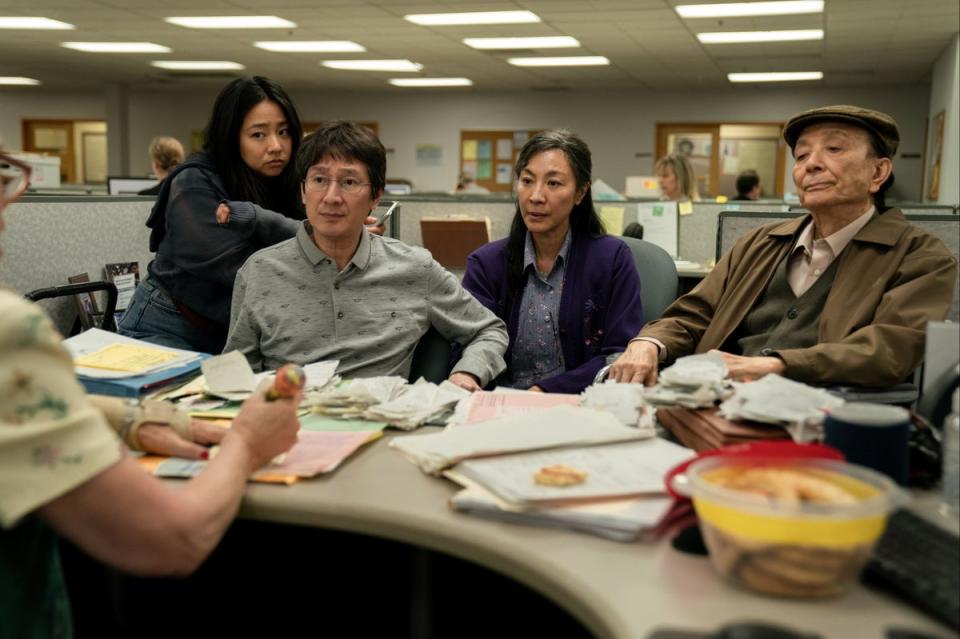
It’s a story jam-packed with depth and creativity that anyone would be moved by. But more than that, the story-at-large of this unstoppable left-field flick proves that there’s still room for original, creatively told stories on the big screen.

 Yahoo News
Yahoo News 